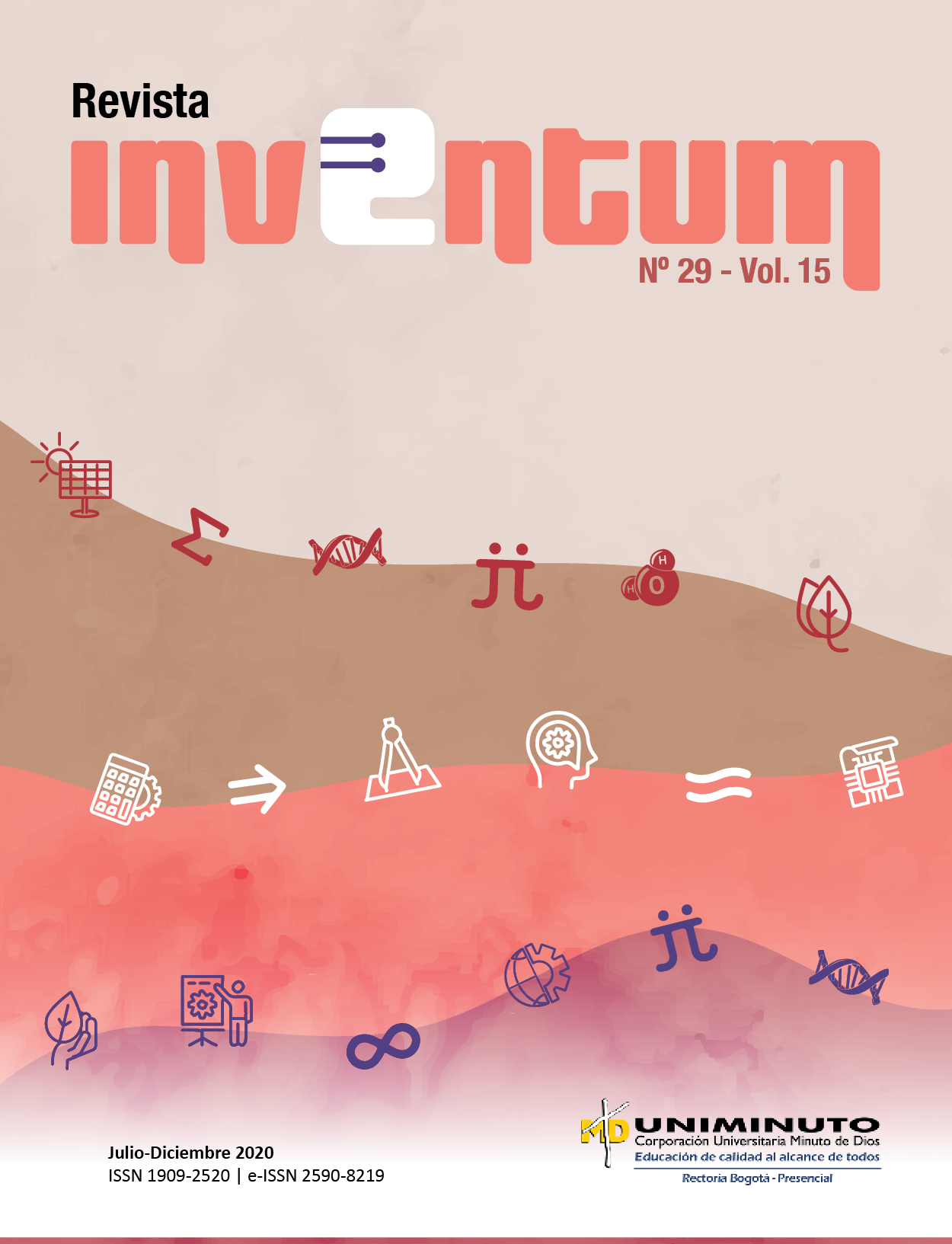Jardín infantil Na´e Dwshu. Un environmental, cultural and technological business design with a person-centered pedagogical approach, in The Hormiga, Putumayo
Main Article Content
Abstract
In the face of the concern for the loss of values in the current society and the lack of a meaning that it satisfies the man’s own life, the idea is born of designing a system of managerial administration under the name infantile garden Na´e Dwshu, projected to offer the educational service to children from two to five years of The Ant, Putumayo. This project is designed with a pedagogic focus centered in the person, from the logotherapy to foment, in the children and its families, the values and the sense of the human existence. Also, it is based in a pedagogic model with environmental, cultural, technological boardings and of scientific approach, for enhance the physical development, cognitive, of the language, emotional and social of the boy, making use of the activities rectors of the initial education, game, art, literature and exploration of the means.
The design of the infantile garden is framed in an environment of knowledge and cultural traditions, and in an environmental, technological context and of entrepreneurship, with a system of environmental managerial administration guided to generate positive social impacts in the directive, administrative, financial processes and of the community, making efficient use of the natural resources and by means of a responsible administration that bears to generate economic, environmental, cultural and social value in the region
Article Details
Section
Se solicita a los autores que diligencien el documento de cesión de derechos de autor sobre el artículo, para que sea posible su edición, publicación y distribución en cualquier medio y modalidad: medios electrónicos, CD ROM, impresos o cualquier otra forma, con fines exclusivamente científicos, educativos y culturales
- La obra pertenece a UNIMINUTO.
- Dada la naturaleza de UNIMINUTO como Institución de Educación Superior, con un modelo universitario innovador para ofrecer Educación de alta calidad, de fácil acceso, integral y flexible; para formar profesionales altamente competentes, éticamente responsables y líderes de procesos de transformación social, EL CEDENTE ha decidido ceder los derechos patrimoniales de su OBRA, que adelante se detalla para que sea explotado por ésta
- El querer de EL CEDENTE es ceder a título gratuito los derechos patrimoniales de la OBRA a UNIMINUTO con fines académicos.
How to Cite
References
[2] Fundación Zio A´I, “Modelo educativo propio integrado e intercultural del pueblo Cofán y cabildos Awá, Emberachamí, Kichwa, Nasa y Pasto de los municipios Valle del Guamuez, San Miguel y Orito – Putumayo.” 2010.
[3] S. C. Cloninger, Teorías de la personalidad. México, Pearson, 2002 [En línea]. Disponible en: https://books.google.com.co/books?id=8O81kic5J5AC&lpg=PP1&dq=Teor%C3%ADas%20de%20la%20personalidad&hl=es&pg=PA5#v=onepage&q=ROGER&f=false
[4] V. E. Frankl, El hombre en busca de sentido. Barcelona, Herder, 1985.
[5] A.M. Quintero. “Modelos de políticas públicas de Colombia, en beneficio de las familias”, Rev. Katálysis, vol.14, no.1,
pp. 98-111, 2011 [En línea]. Disponible en: https://www.scielo.br/scielo.php?pid=S1414-49802011000100013&script=sci_arttext&tlng=es. https://doi.org/10.1590/S1414-49802011000100013
[6] A. Bernal-Martínez, “La identidad de la familia: un reto educativo”, Perspectiva Educacional, vol. 55, no. 1, pp. 114-128, 2016 [En línea]. Disponible en: http://www.perspectivaeducacional.cl/index.php/peducacional/article/view/289. doi:10.4151/07189729-Vol.55-Iss.1-Art.289
[7] J. Yepes Stork, R. Aranguren-Echevarria, Fundamentos de antropología. un ideal de la excelencia humana. España, Eunsa, Ediciones Universidad de Navarra, 2001.
[8] L. Britton, Jugar y aprender con el método Montessori: guía de actividades educativas desde los 2 a los 6 años. España, Paidos, 2017.
[9] E. Martínez, “Comenius”. [En línea]. Disponible en: http://educomunicacion.es/figuraspedagogia/0_comenius.htm. [Accedido: 04-mayo- 2018].
[10] Asociación Mesa Permanente Del Pueblo Cofán y Cabildos indígenas del Valle del Gumuez, San Miguel y Orito -Putumayo. Plan de salva guarda del pueblo Cofan - Ingi Atesw´Phama Ñuña´He, 2010.
[11] Fundación Zio-A´I, Plan de vida del pueblo Cofán y cabildos indígenas del Valle Del Guamuez y San Miguel, 2002.
[12] A. Martínez, J. P. Figueroa, “Evolución de los conceptos y paradigmas que orientan la gestión ambiental ¿Cuáles son sus limitaciones desde lo glocal?”, Revista Ingenierías Universidad de Medellín, vol. 13, no. 24, pp. 13-27,
2013 [En línea]. Disponible en: https://www.researchgate.net/publication/317499951_Evolucion_de_los_conceptos_y_paradigmas_que_orientan_la_gestion_ambiental_cuales_son_sus_limitaciones_desde_lo_glocal.
[13] M. Porter, Las cinco fuerzas competitivas que le dan forma a la estrategia. Estados Unidos, Harvard Business School Publishing, 2008 [En línea]. Disponible en: https://utecno. files.wordpress.com/2014/05/las_5_fuerzas_
competitivas-_michael_porter-libre.pdf
[14] M. Casas, “Introducción a la metodología de la investigación en bioética: sugerencias para el desarrollo de un protocolo de investigación cualitativa interdisciplinaria”, Acta bioeth, vol.14, no.1, pp. 97-105, 2008
[En línea]. Disponible en: http://dx.doi.org/10.4067/S1726-569X2008000100013.
[15] J. Zanardini. Revista de la universidad católica ‘Nuestra Señora de la Asunción. Estudios Paraguayos, vol. XXVIII, no. 1 y 2, 2010 [En línea]. Disponible en: https://books.google.com.py/books?id=nA0mDwAAQBAJ&printsec=
frontcover&source=gbs_ge_summary_r&-cad=0#v=snippet&q=briones&f=false
[16] E. González, Introducción temprana a las TIC: Estrategias para educar en un uso responsable en educación infantil y primaria. España, Ministerio de Educación y Ciencia, 2007 [En línea]. Disponible en: https://sede.educacion.gob.es/publiventa/PdfServlet?pdf=VP12288.pdf&area=E.
[17] E. Erikson, Infancia y sociedad. New York, Hormé, 1987 [En línea]. Disponible en: https://www.academia.edu/31099902/Erikson_Infancia_y_Sociedad_8_Edades_de_La_Vida. ISBN 950.618.000.8 pp. 223-244.
[18] Y.C. Ortiz, “El sistema de gestión ambiental bajo NTC-ISO 14001:2015 para una institución de educación superior desde la planificación y control operacional”, Revista Signos, vol. 10, núm. 1, pp. 127-137, 2018. [En línea]. Disponible en: https://dialnet.unirioja.es/servlet/articulo?codigo=6726320.
[19] “Norma Internacional - ISO 31000:2018”, 2018 [En línea]. Disponible en: https://www.iso.org/obp/ui#iso:std:iso:31000:ed-2:v1:es





